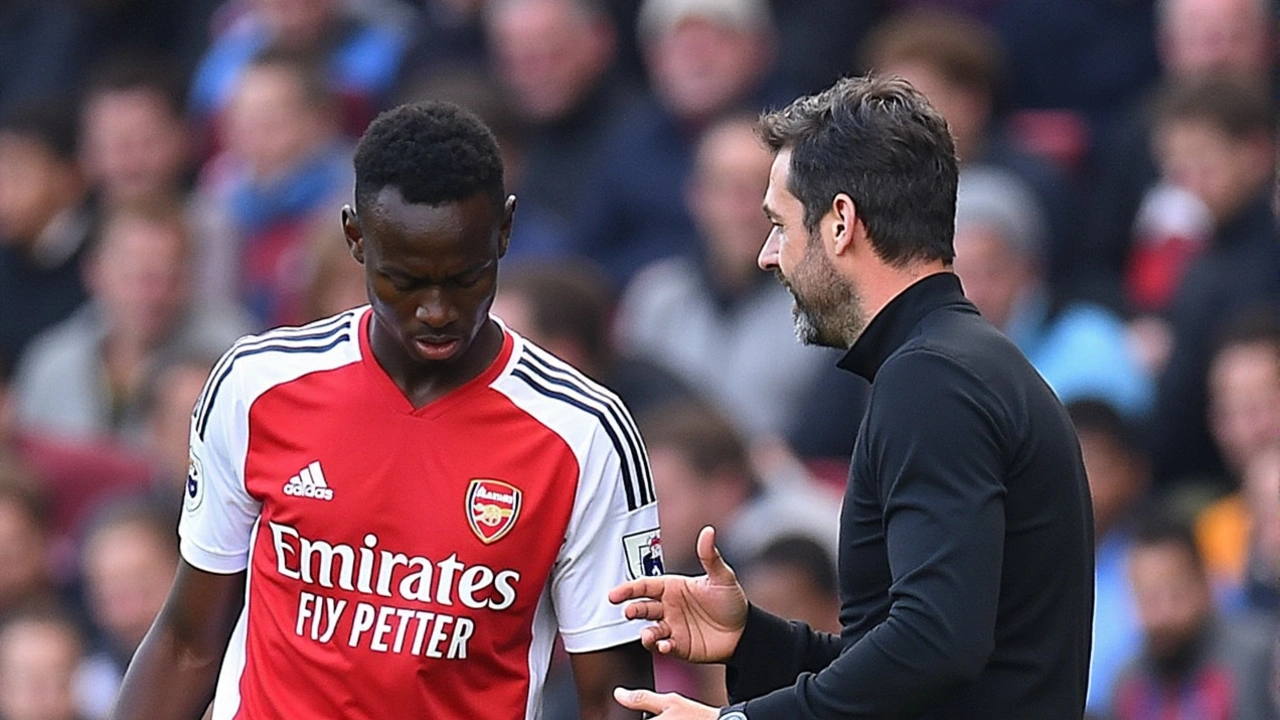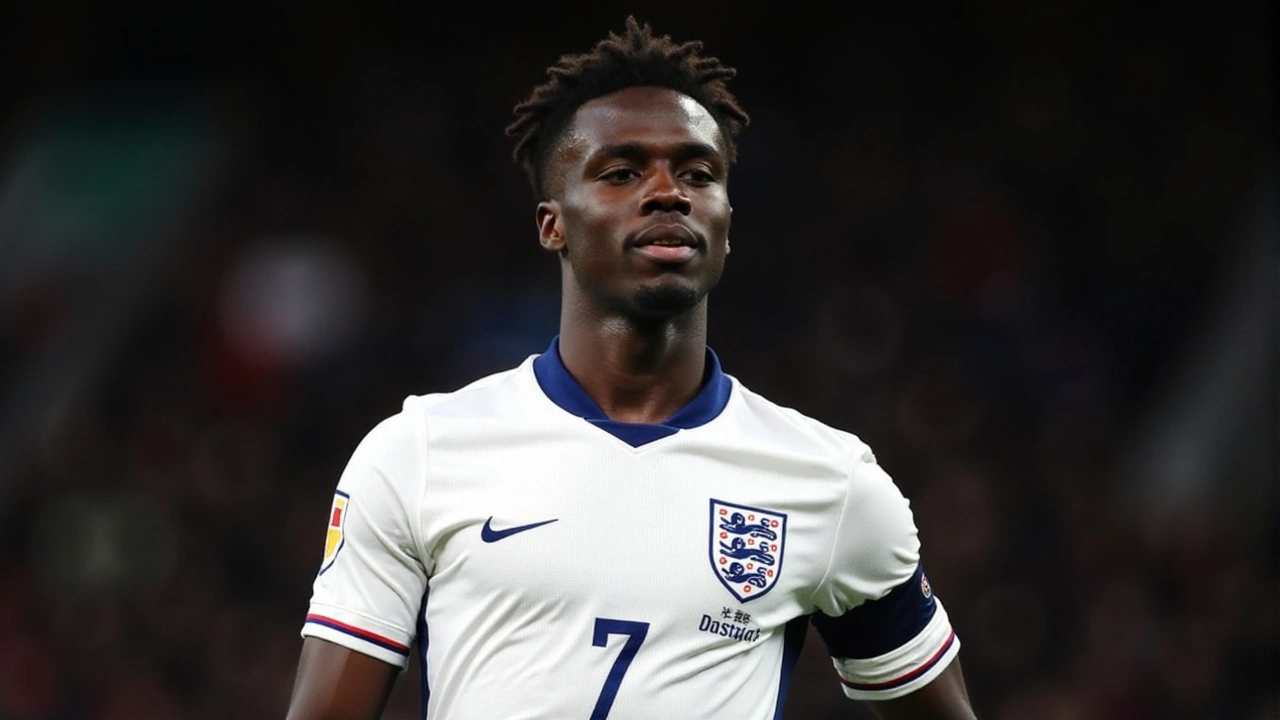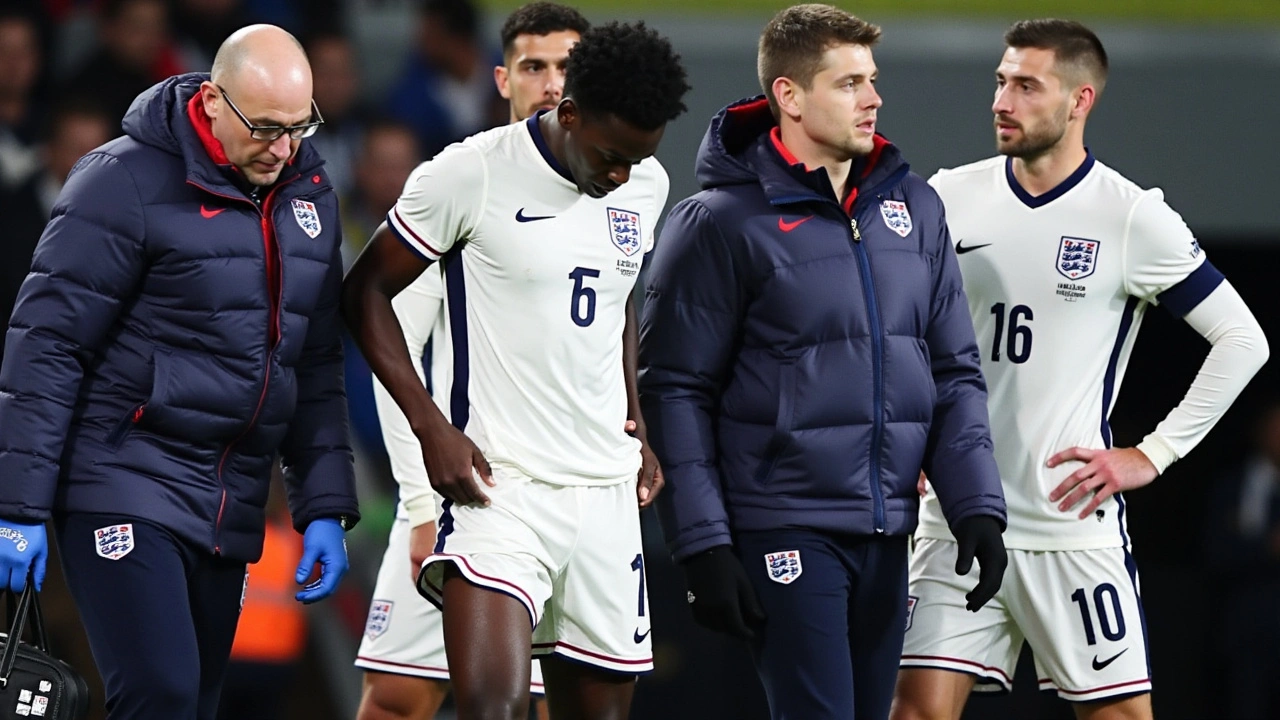An Unexpected Setback for Arsenal's Rising Star
In a hotly contested UEFA Nations League match between England and Greece, fans witnessed a concerning moment as Arsenal's talented winger, Bukayo Saka, limped off the pitch due to what appeared to be a muscle injury. The incident took place during the second half of the game, a critical juncture when players are often pushed to their limits. For Saka, who has been instrumental this season, this unexpected departure was not only a personal setback but one that quickly sent ripples through both the national and club level.
Saka's form has been pivotal for Arsenal, his flair on the field and ability to maneuver through defenses make him a jewel in the crown of the Premier League team. Thus, the injury raised immediate concerns, not just in the camp of the England national team but especially within Arsenal, where Saka has been a key figure in their quest for domestic and European honors. The sight of Saka reaching for the back of his leg initially suggested a muscle strain, a common yet troublesome injury among footballers.
Understanding the Nature of the Injury
Muscle injuries can range from minor strains to more severe tears, and determining their extent often requires detailed medical evaluation. Following the incident, England's medical team promptly took Saka for an initial assessment to understand the gravity of the situation. This process, while routine, holds crucial implications for both England's international aspirations and Arsenal's strategic planning for upcoming fixtures.
Muscle injuries of this nature are usually classified into three grades, with grade one being a mild strain and grade three indicating a complete muscle tear. The treatment and recovery time is contingent upon the severity, with mild strains sometimes resolved in a week, whereas more severe injuries could sideline a player for several months. For Saka and Arsenal, the hope is that further scans will paint a less bleak picture. Regardless, this scenario leaves both club and country in a state of heightened vigilance as they await definitive news.

Impact on Arsenal's Upcoming Fixtures
In the aftermath of Saka's injury, Arsenal now faces a critical juncture in their season. As the fixture list grows congested, the potential absence of one of their standout players could influence their tactics and strategy significantly. With matches against rivals in the Premier League and outings in European competitions, Arsenal's management is undoubtedly exploring alternatives and recalibrating their plans to mitigate the possible void left by Saka.
For Arsenal manager Mikel Arteta, who has expressed admiration for Saka's versatility and work ethic, the challenge lies in balancing a team that can maintain the momentum without compromising their style of play. Arteta may look to his bench for potential fill-ins, or perhaps tweak the team's formation to bolster areas of weakness that could emerge in Saka's absence. Such strategic adaptations, although risky, could also allow other squad members to step up and fill the shoes of their injured compatriot.
Community's Concern and Support
Fans of Arsenal hold Bukayo Saka close to their hearts, not only for his display on the football pitch but also for his demeanor and resilience, notably seen during challenging times both on and off the field. His contributions during matches consistently elevate the team's performance, and his injury has understandably sparked concern among supporters. Social media platforms have been flooded with messages wishing Saka a swift recovery, reflecting the depths of admiration and support he commands from the Gunners' faithful.
The broader football community also stands unified, recognizing that while injuries are part and parcel of the sport, they nevertheless represent emotional and physical hurdles for the athletes involved. As the English football community anxiously awaits updates, it's clear that Saka's place in their hearts is unyielding, and the hope for his return remains strong.

Reflecting on Recurrent Injury Issues
The football world has seen multiple instances where young talent has been hindered by recurrent injuries, raising questions about player workload and the intense physical demands of the sport. Experts have increasingly advocated for better injury management and prevention strategies, highlighting the need for comprehensive support systems centered around player welfare. Saka's case becomes part of this larger conversation concerning athlete health and sustainability in high-performance environments.
As Arsenal and England's medical teams delve deeper into Saka's condition, this event serves as a stark reminder of the unpredictability inherent in competitive sports. The balance between achieving glory on the field and ensuring players' long-term health is delicate and often challenging to navigate. The outcome of Saka's situation will likely offer additional insights into how football organizations could enhance their care and rehabilitation protocols.
Counting on a Swift Recovery
While the waiting game continues, anticipation grows around Saka's potential return to full fitness. The trajectory of his recovery will be closely monitored by fans, teammates, and officials alike, all eager to see him back in action. Saka's determination and past resilience suggest that he will tackle his rehabilitation with the same vigor and passion he shows on the field.
The journey from injury to recovery is seldom linear, yet with the support of a robust medical team and the encouragement of those who stand by him, Bukayo Saka is poised to overcome this hurdle. His story is emblematic of the spirit and dedication inherent in athletes who strive for excellence against the odds, and Arsenal, along with their global fan base, will be rooting for his return with fervor.


Derek Pholms
October 13, 2024 AT 16:12musa dogan
October 14, 2024 AT 07:53Drasti Patel
October 14, 2024 AT 20:13Mark Dodak
October 16, 2024 AT 09:39Stephanie Reed
October 18, 2024 AT 06:38Jason Lo
October 19, 2024 AT 00:32Brian Gallagher
October 20, 2024 AT 18:37Elizabeth Alfonso Prieto
October 22, 2024 AT 03:21Harry Adams
October 22, 2024 AT 13:49Kieran Scott
October 24, 2024 AT 08:13Joshua Gucilatar
October 25, 2024 AT 04:05jesse pinlac
October 26, 2024 AT 23:44Jess Bryan
October 28, 2024 AT 14:41Ronda Onstad
October 30, 2024 AT 12:10